
How to Use Raspberry Pi 4b: Examples, Pinouts, and Specs
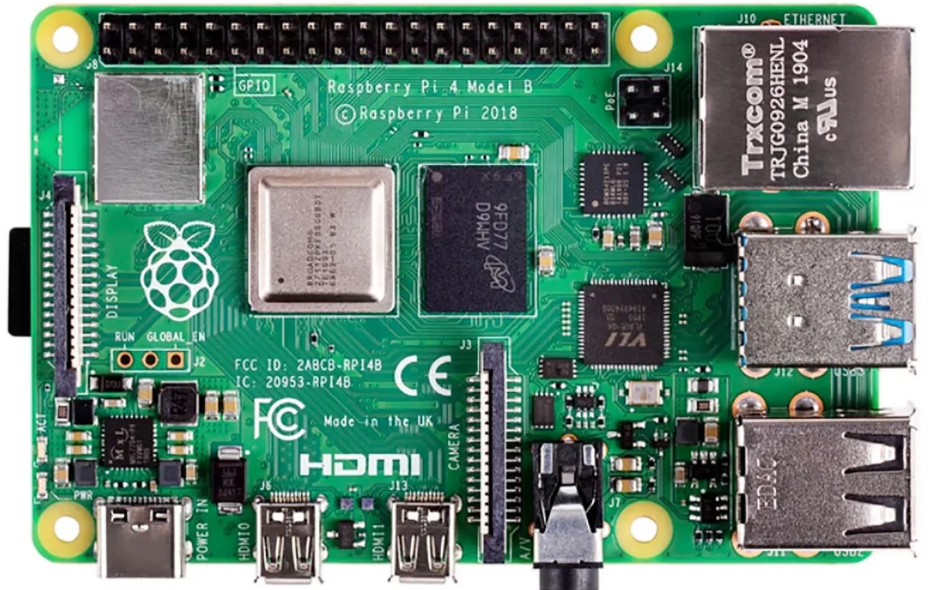
 Design with Raspberry Pi 4b in Cirkit Designer
Design with Raspberry Pi 4b in Cirkit DesignerIntroduction
The Raspberry Pi 4B is a small, affordable computer designed for a variety of electronics projects and programming tasks. It features a quad-core ARM Cortex-A72 CPU, available in 2GB, 4GB, or 8GB RAM configurations, and offers various connectivity options including USB, HDMI, and Ethernet. This versatile device is widely used in educational settings, DIY projects, and professional applications.
Explore Projects Built with Raspberry Pi 4b
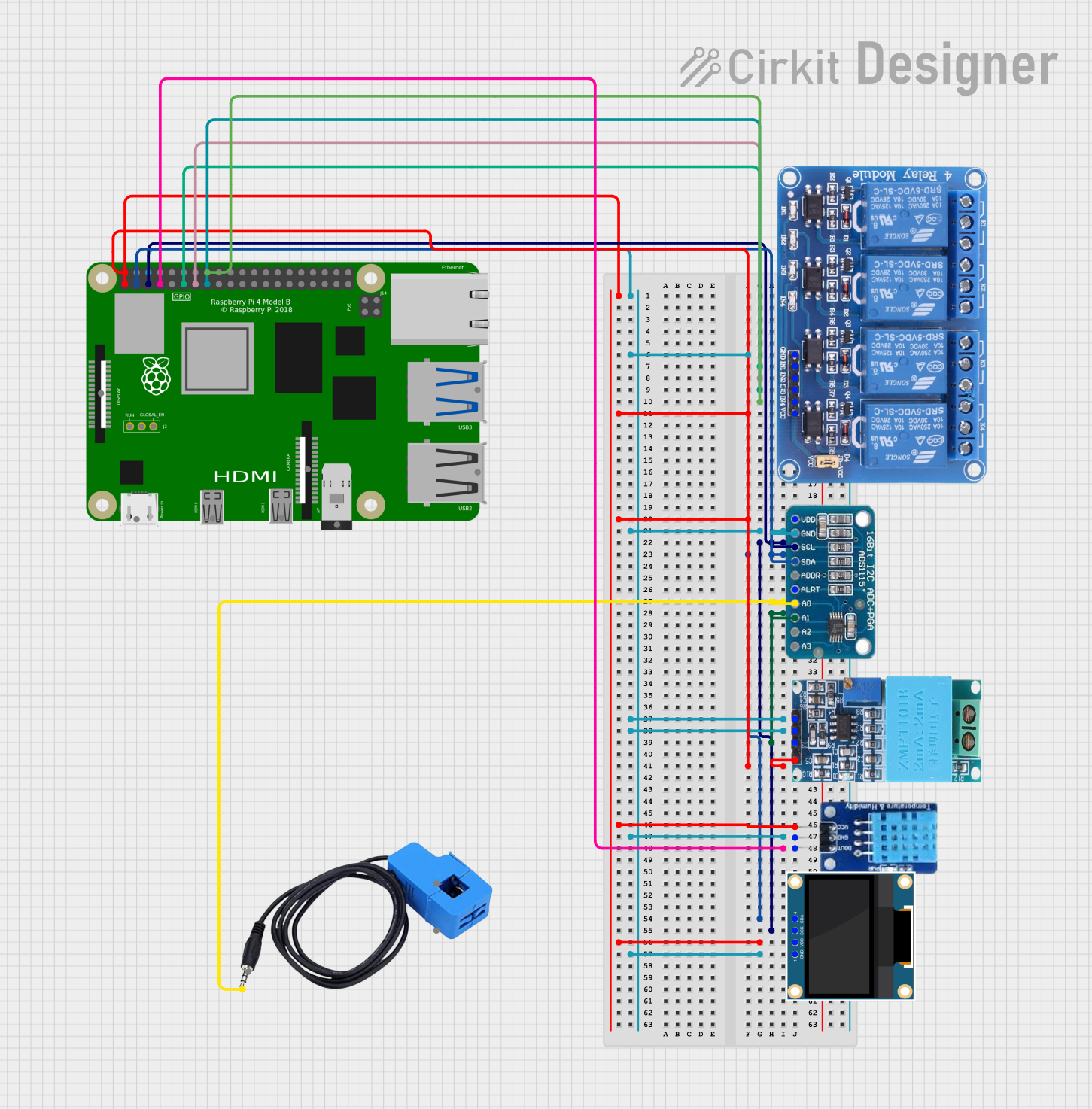
 Open Project in Cirkit Designer
Open Project in Cirkit Designer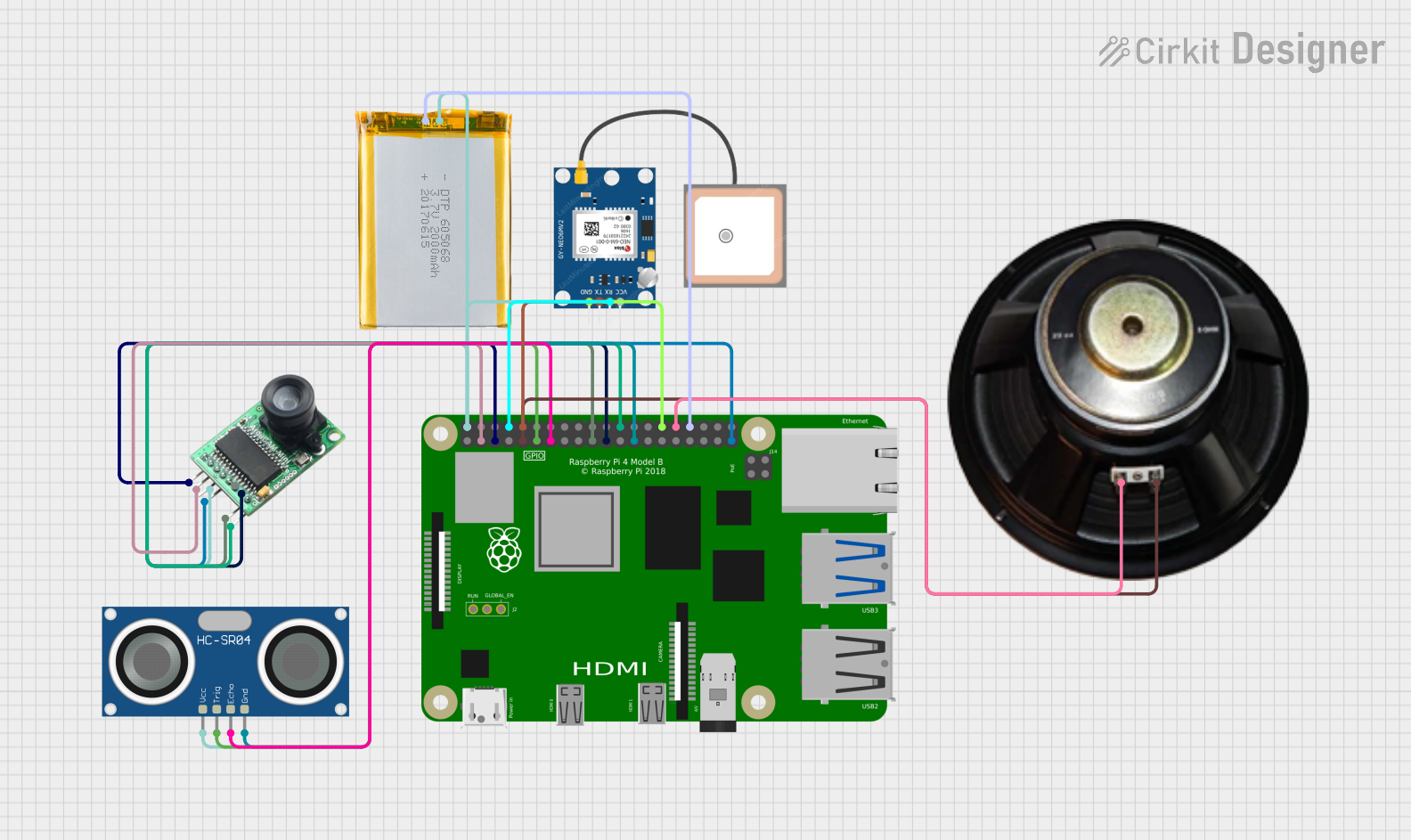
 Open Project in Cirkit Designer
Open Project in Cirkit Designer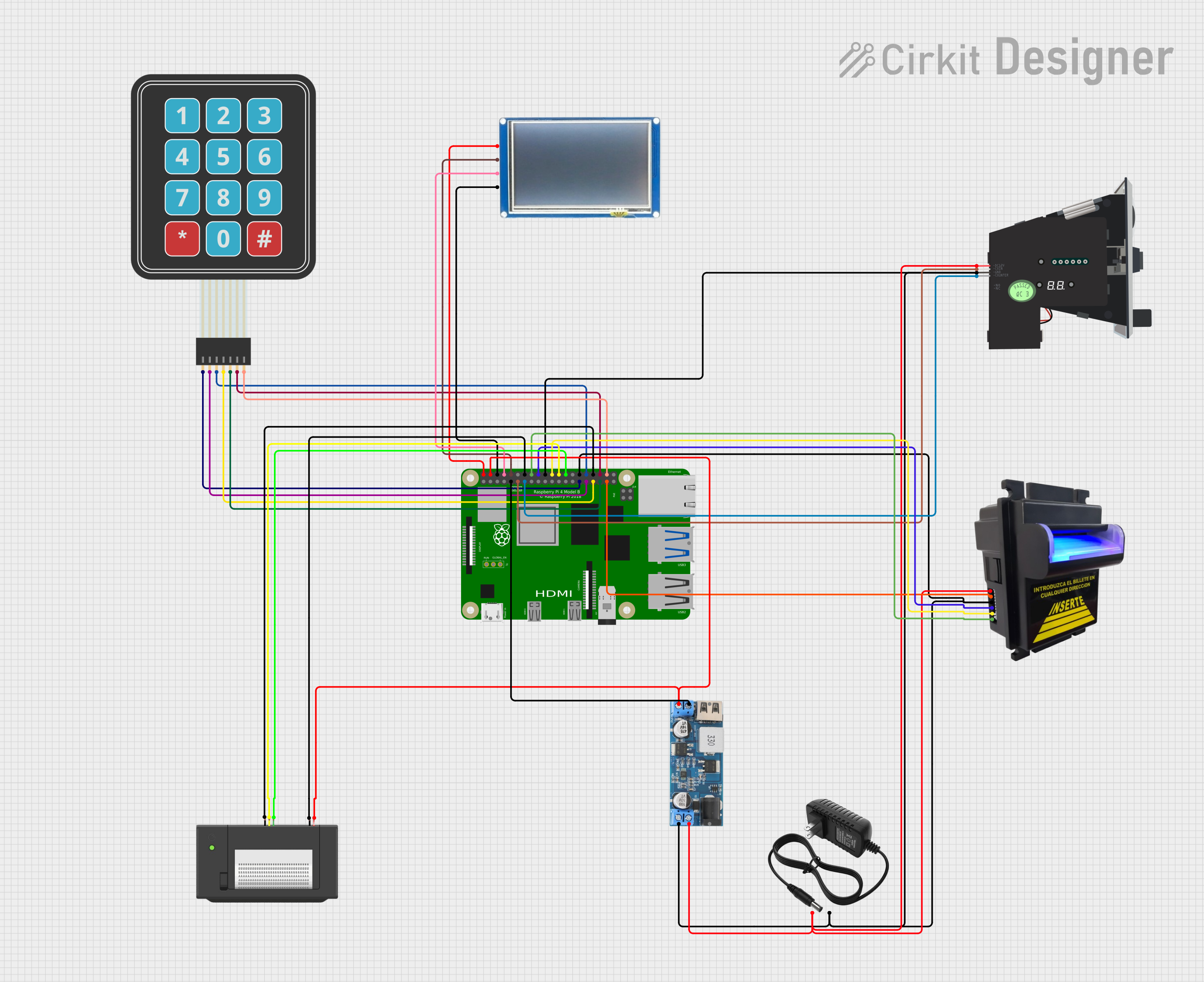
 Open Project in Cirkit Designer
Open Project in Cirkit Designer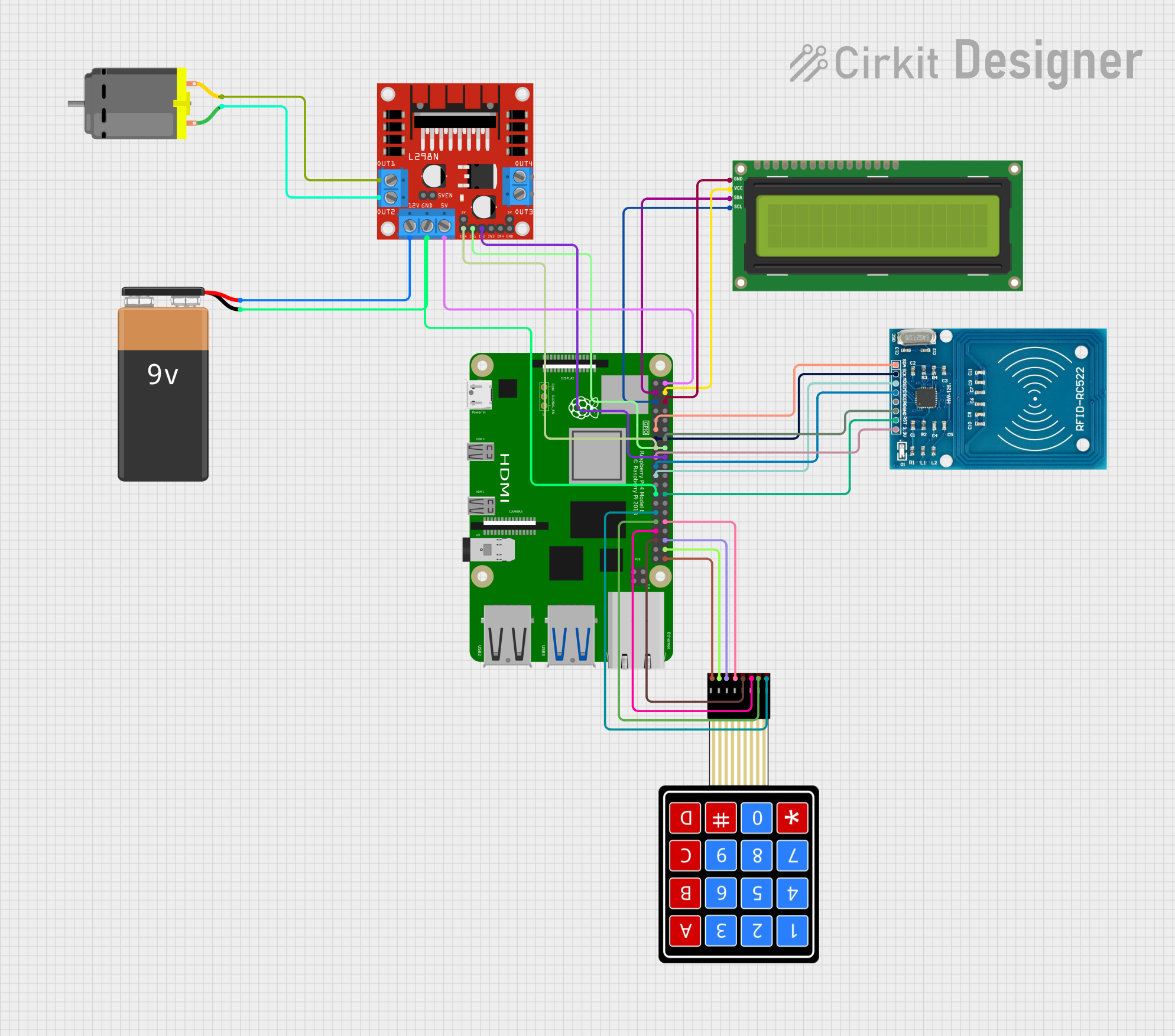
 Open Project in Cirkit Designer
Open Project in Cirkit DesignerExplore Projects Built with Raspberry Pi 4b

 Open Project in Cirkit Designer
Open Project in Cirkit Designer
 Open Project in Cirkit Designer
Open Project in Cirkit Designer
 Open Project in Cirkit Designer
Open Project in Cirkit Designer
 Open Project in Cirkit Designer
Open Project in Cirkit DesignerCommon Applications and Use Cases
- Educational Projects: Ideal for teaching programming and electronics.
- Home Automation: Can be used to control smart home devices.
- Media Centers: Perfect for setting up a home media center with software like Kodi.
- IoT Projects: Acts as a central hub for Internet of Things (IoT) devices.
- Retro Gaming: Can be configured to run retro gaming emulators.
- Web Servers: Suitable for hosting small web servers and applications.
Technical Specifications
Key Technical Details
| Specification | Details |
|---|---|
| CPU | Quad-core ARM Cortex-A72 |
| RAM | 2GB, 4GB, or 8GB LPDDR4 |
| USB Ports | 2 x USB 3.0, 2 x USB 2.0 |
| HDMI Ports | 2 x Micro HDMI (up to 4K resolution) |
| Ethernet | Gigabit Ethernet |
| Wireless | 802.11ac Wi-Fi, Bluetooth 5.0 |
| GPIO Pins | 40-pin GPIO header |
| Power Supply | 5V/3A via USB-C |
| Storage | MicroSD card slot |
| Video Output | Dual 4K display support |
| Audio Output | 3.5mm audio jack, HDMI |
Pin Configuration and Descriptions
| Pin Number | Name | Description |
|---|---|---|
| 1 | 3.3V | 3.3V Power |
| 2 | 5V | 5V Power |
| 3 | GPIO2 | SDA1 (I2C) |
| 4 | 5V | 5V Power |
| 5 | GPIO3 | SCL1 (I2C) |
| 6 | GND | Ground |
| 7 | GPIO4 | General Purpose I/O |
| 8 | GPIO14 | TXD (UART) |
| 9 | GND | Ground |
| 10 | GPIO15 | RXD (UART) |
| 11 | GPIO17 | General Purpose I/O |
| 12 | GPIO18 | General Purpose I/O |
| 13 | GPIO27 | General Purpose I/O |
| 14 | GND | Ground |
| 15 | GPIO22 | General Purpose I/O |
| 16 | GPIO23 | General Purpose I/O |
| 17 | 3.3V | 3.3V Power |
| 18 | GPIO24 | General Purpose I/O |
| 19 | GPIO10 | MOSI (SPI) |
| 20 | GND | Ground |
| 21 | GPIO9 | MISO (SPI) |
| 22 | GPIO25 | General Purpose I/O |
| 23 | GPIO11 | SCLK (SPI) |
| 24 | GPIO8 | CE0 (SPI) |
| 25 | GND | Ground |
| 26 | GPIO7 | CE1 (SPI) |
| 27 | ID_SD | ID EEPROM |
| 28 | ID_SC | ID EEPROM |
| 29 | GPIO5 | General Purpose I/O |
| 30 | GND | Ground |
| 31 | GPIO6 | General Purpose I/O |
| 32 | GPIO12 | General Purpose I/O |
| 33 | GPIO13 | General Purpose I/O |
| 34 | GND | Ground |
| 35 | GPIO19 | General Purpose I/O |
| 36 | GPIO16 | General Purpose I/O |
| 37 | GPIO26 | General Purpose I/O |
| 38 | GPIO20 | General Purpose I/O |
| 39 | GND | Ground |
| 40 | GPIO21 | General Purpose I/O |
Usage Instructions
How to Use the Raspberry Pi 4B in a Circuit
Power Supply:
- Use a 5V/3A USB-C power supply to power the Raspberry Pi 4B.
- Ensure the power supply is reliable to avoid voltage drops.
Connecting Peripherals:
- Connect a monitor via the Micro HDMI ports.
- Attach a keyboard and mouse to the USB ports.
- Insert a microSD card with the operating system (e.g., Raspbian) into the microSD card slot.
GPIO Usage:
- Use the 40-pin GPIO header for connecting sensors, LEDs, and other components.
- Refer to the pin configuration table for correct pin assignments.
Networking:
- Connect to the internet via Ethernet or Wi-Fi.
- Configure network settings through the operating system.
Important Considerations and Best Practices
- Heat Management: Use a heatsink or fan to manage heat, especially for intensive tasks.
- Static Precautions: Handle the Raspberry Pi 4B with care to avoid static discharge.
- Software Updates: Regularly update the operating system and software to ensure security and performance.
- Backup: Regularly back up your data to avoid data loss.
Troubleshooting and FAQs
Common Issues and Solutions
No Display Output:
- Solution: Check the HDMI connection and ensure the monitor is set to the correct input. Verify that the microSD card is properly inserted and contains a valid operating system.
Power Issues:
- Solution: Ensure you are using a 5V/3A power supply. Check the power cable for any damage.
Overheating:
- Solution: Use a heatsink or fan to improve heat dissipation. Ensure the Raspberry Pi is in a well-ventilated area.
Network Connectivity Problems:
- Solution: Verify the Ethernet cable connection or Wi-Fi settings. Restart the router if necessary.
FAQs
Q1: Can I use any microSD card with the Raspberry Pi 4B?
- A1: It is recommended to use a Class 10 microSD card with at least 16GB capacity for optimal performance.
Q2: How do I enable SSH on the Raspberry Pi 4B?
- A2: Create an empty file named
ssh(without any extension) in the boot partition of the microSD card. This will enable SSH on boot.
Q3: Can I connect multiple displays to the Raspberry Pi 4B?
- A3: Yes, the Raspberry Pi 4B supports dual 4K displays via the two Micro HDMI ports.
Q4: How do I update the operating system?
- A4: Use the following commands in the terminal:
sudo apt update sudo apt full-upgrade
Q5: Is the Raspberry Pi 4B compatible with Arduino?
- A5: Yes, you can interface the Raspberry Pi 4B with Arduino using the GPIO pins and appropriate libraries.
Example Code for GPIO Control
Here is an example of how to control an LED connected to GPIO pin 17 using Python:
import RPi.GPIO as GPIO
import time
Set the GPIO mode
GPIO.setmode(GPIO.BCM)
Set up GPIO pin 17 as an output
GPIO.setup(17, GPIO.OUT)
try: while True: GPIO.output(17, GPIO.HIGH) # Turn on the LED time.sleep(1) # Wait for 1 second GPIO.output(17, GPIO.LOW) # Turn off the LED time.sleep(1) # Wait for 1 second except KeyboardInterrupt: pass finally: GPIO.cleanup() # Clean up GPIO settings
This code will blink an LED connected to GPIO pin 17 on and off every second. Make sure to install the RPi.GPIO library using the following command:
```sh
sudo apt install python3-rpi.gpio
This documentation provides a comprehensive guide to using the Raspberry Pi 4B, covering its technical specifications, usage instructions, and troubleshooting tips. Whether you are a beginner or an experienced user, this guide will help you make the most of your Raspberry Pi 4B.